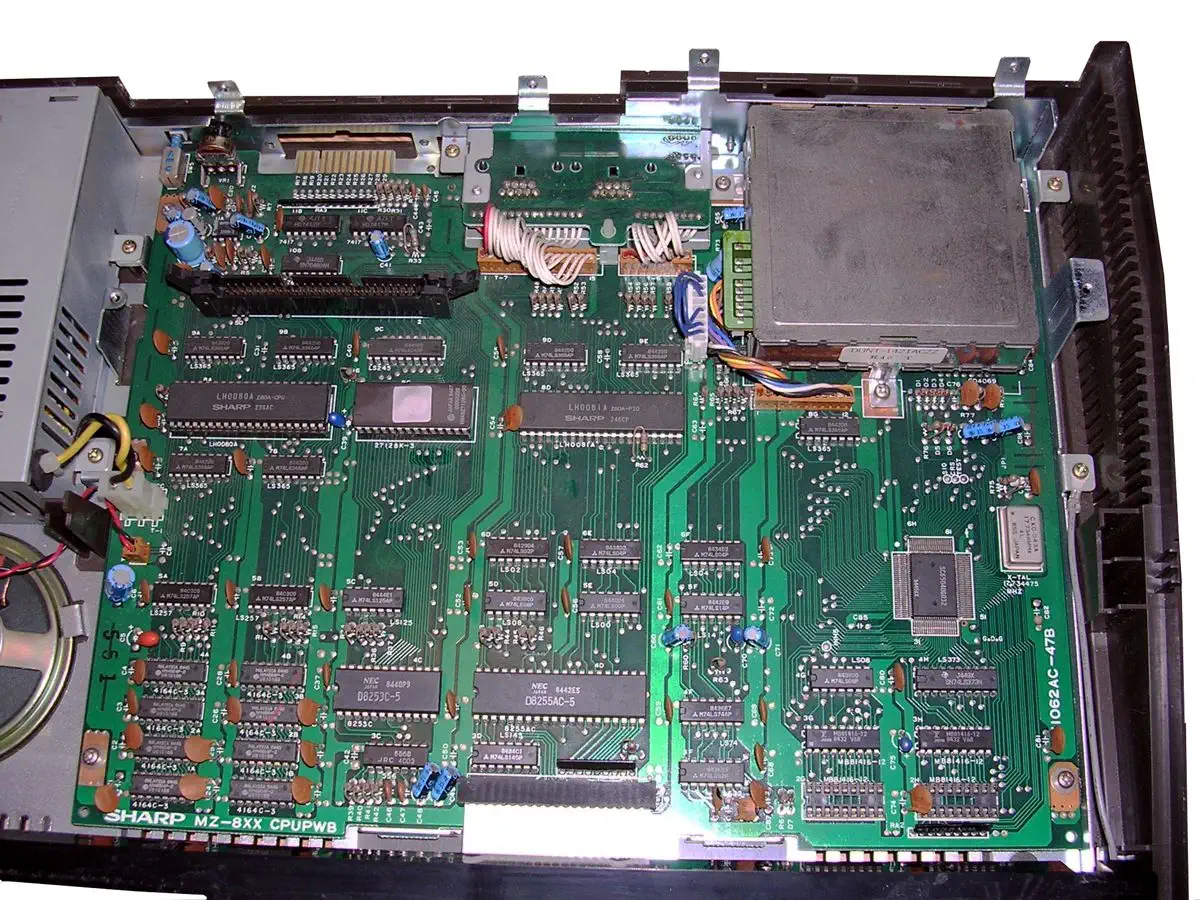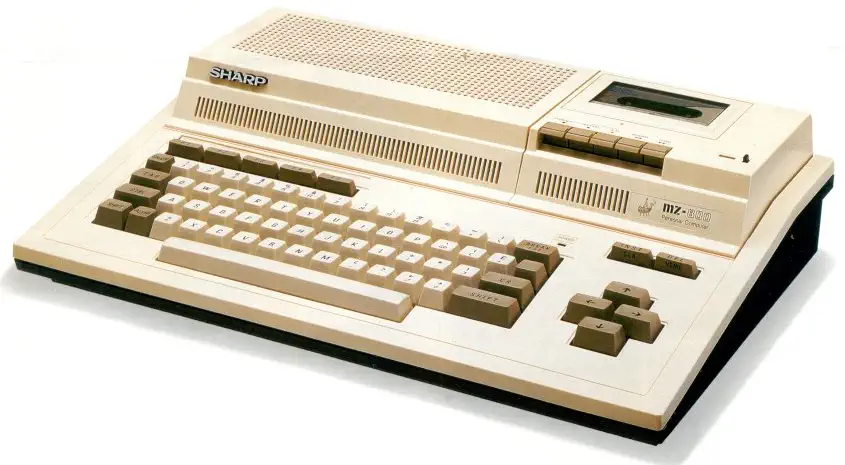Introduction
The Sharp MZ-800 was launched in 1985 in the UK. The press was mildly positive about the release, hailing the machine as compatible with the IBM-PC offering a great business solution to run CP/M software.
It came standard with a built in tape recorder, but you could buy a Quckdisk drive, or an external 5.25" Floppy Drive to run CP/M. As with the other MZ machines, the computer came only with a built in monitor program, making it a blank slate to run any software. The draw-back was that you always had to load something before you could be productive.
The Sharp MZ-800 has a 40/80 column display, 2 built-in I/O slots, offers 16-color hi-res graphics, 3 channel sound, standard joysticks and has a special switch to emulate the MZ-700. This was so that people could easily make the upgrade to the 800 without losing access to their older software.



Zilog Z80 CPU Family
The Z80 quickly became popular in the personal computer market, with many early personal computers, such as the TRS-80 and Sinclair ZX80, using the Z80 as their central processing unit (CPU). It was also widely used in home computers, such as the MSX range, SORD, and the Amstrad CPC, as well as in many arcade games. Additionally, it was also used in other applications such as industrial control systems, and embedded systems. The Z80 was widely used until the mid-1980s, when it was gradually replaced by newer microprocessors such as the Intel 80286 and the Motorola 68000.
The Z80 microprocessor was developed by Zilog, a company founded by Federico Faggin in 1974. The Z80 was released in July 1976, as a successor to the Intel 8080. It was designed to be fully compatible with the 8080, but also included new features such as an improved instruction set, more powerful interrupts, and a more sophisticated memory management system.
The Z80 quickly became popular in the personal computer market, with many early personal computers, such as the TRS-80 and Sinclair ZX80, using the Z80 as their central processing unit (CPU). It was also widely used in home computers, such as the MSX range, SORD, and the Amstrad CPC, as well as in many arcade games. Additionally, it was also used in other applications such as industrial control systems, and embedded systems. The Z80 was widely used until the mid-1980s, when it was gradually replaced by newer microprocessors such as the Intel 80286 and the Motorola 68000. The design was licensed to Synertek and Mostek as well as the European SGS.
The Z80s instruction set is binary compatible with the Intel 8080, so that 8080 code such as the CP/M Operating System and Intel's PL/M compiler for the 8080 can run unmodified on the Z80. The Z80 had many enhancements over the 8080 such as 16-bit data movement instructions, block copy and block I/O instructions, single bit addressing of all registers, IX/IY offset registers, better interrupt system and a complete duplicate register file for context switching during an interrupt.
Source: WikiPedia

VRAM: 16kB Sound Chip Texas Instruments SN76489 Sound 3 wave channels + white noise Display Chip PCG - Programmable Character Generator Display 40x25 text
320x200 graphics
640x200 graphics Best Text 40x25 Best Color none Best Graphics 640x200 Sprites none System OS Monitor System Storage Built in tape drive, optional Quick Disk or 5.25" disk drive. Original Price £249

